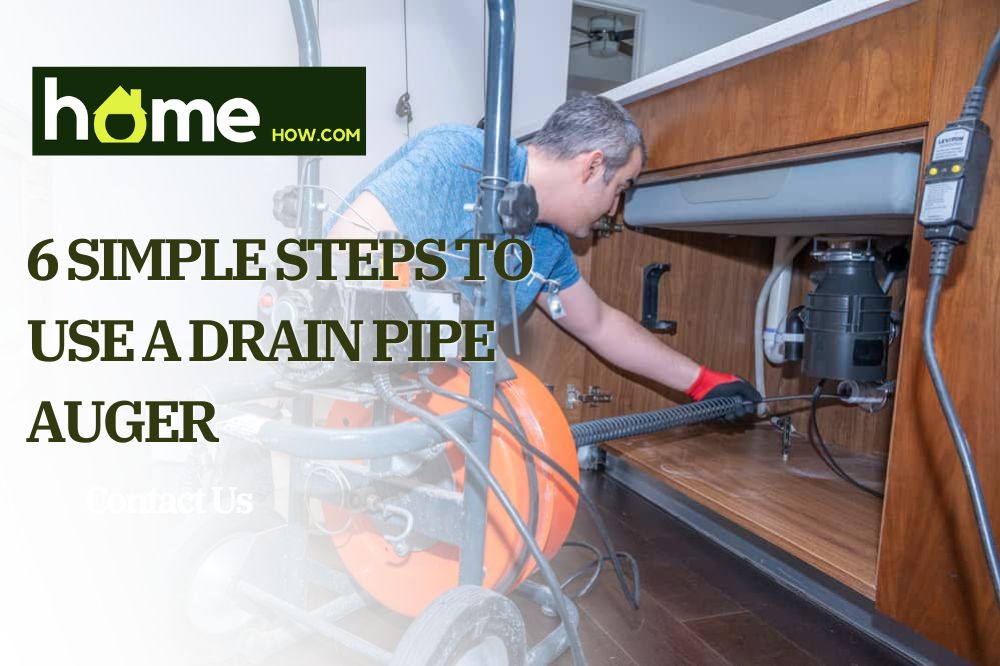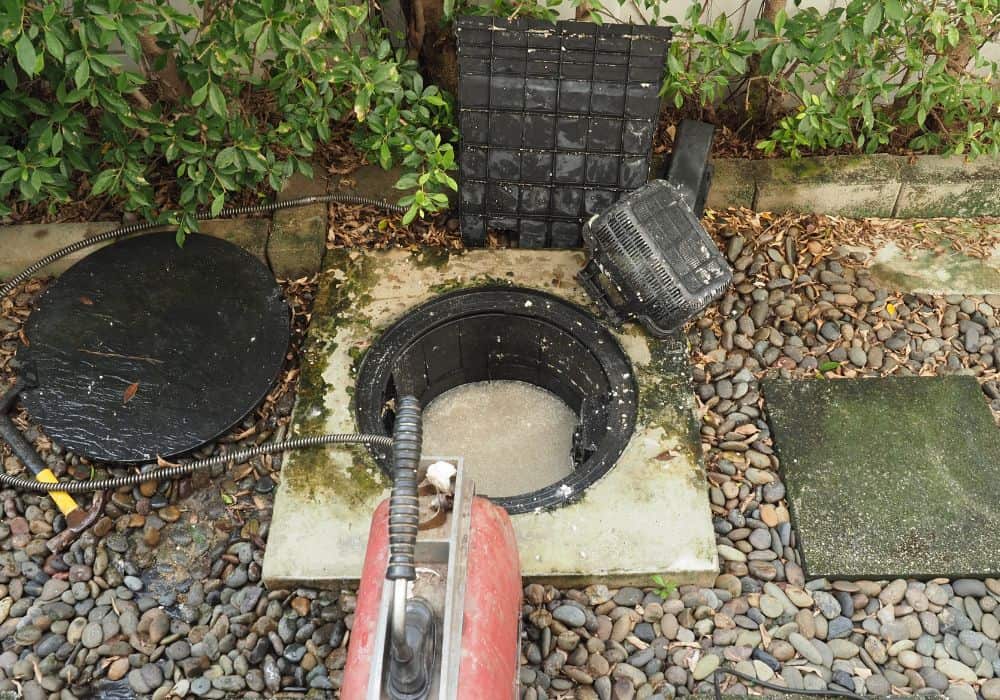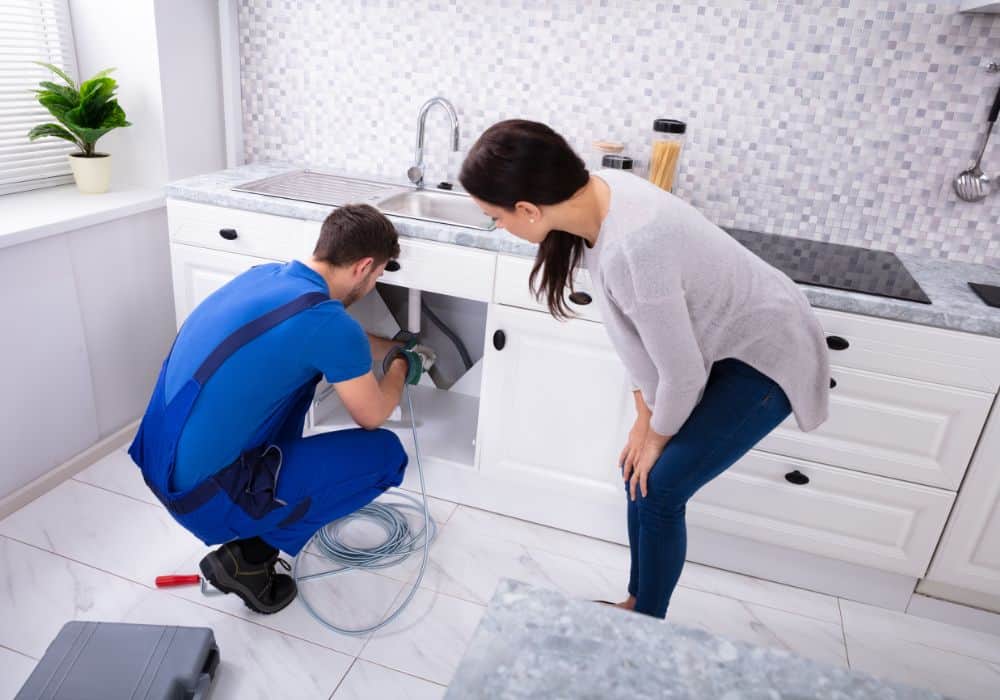Do you need to remove the blockages in your drain pipe? Then the best way to go about this is to use an auger. This apparatus can help remove the debris that has built up in your sewage system.
Although it looks intimidating, it’s fairly easy to use. All you just need to do is follow these tips on how to use a drain pipe auger – be it a manual model or an electrically-powered one.
Tools Needed
- Drum auger: Goggles, gloves, wrench, cloth, drum auger
- Power auger: Leather gloves, goggles, power auger, hot water
- Toilet auger: Goggles, gloves, toilet auger
Augers come in different configurations and specialties (e.g., drug auger vs. toilet auger.) Depending on what’s clogged or what equipment you have at hand, you may need to follow one (or more) of these instructions:
Drum Auger
Also known as a canister auger because of its configuration, this equipment can help remove the ‘obstruction’ in your sink or bathtub pipes. An auger comes in really handy if the drain cleaner, plunger, or hanger can’t seem to dislodge the clog in your pipe.
Step 1. Remove the P-trap
Wear gloves and goggles.
Place a bucket underneath the U-shaped metal/PVC pipe underneath your sink. This will help catch the runoff from the pipe.
You can use your hand or a wrench to loosen and remove the slip-nuts located at the end of the P-trap.
Once you’ve removed the P-trap, Make sure to look inside. The clog may be in here so you may not need to use an auger at all!
For best results, consider removing the trap arm, which you’ll find between the P-trap and the wall pipe. This will give you easier, better access to the clogged drainpipe.
Step 2. Insert the drum auger cable
Insert the auger into the trap arm (the pipe leading to the wall.) Do this slowly for you don’t want to end up damaging the pipe walls.
Push the cable until you feel resistance. Pull out 12 inches of the cable before tightening the set screw.
Step 3. Crank the auger handle
This action will help twist the hooked end into the clog. Make sure to pull the cable back and forth/up and down as you do so. This will help remove the debris.
If you hear scraping noises while using the auger, then it means that you need to reposition your auger.
Pro tip: Keep your snake handle as close to the drainpipe as possible. Less slack = less force on the pipes.
Step 4. Retract the cable
Pull out the cable from the pipe and feed it to the drum. Ideally, you should clean the cable segment while you do this. This will keep your cable rust-free (unwiped water and materials can end up corroding the material.)
Once you get to the end of the cable, remove the debris that has been caught on the hook. Remember to throw it in the garbage, not in any other drain!
Step 5. Reassemble the P-trap
Reinstall the P-trap by placing/tightening the slip-nuts with an adjustable wrench. Again, you may also use your hands to affix the slip nuts.
Step 6. Check the drain
Run hot water into the sink. To prevent damage to your pipes, the water should be only at a maximum of 140 degrees Fahrenheit.
Flush the drain and remove the little remaining pieces of debris. If it’s still draining slowly, then you will need to auger the pipe again.
Power Auger
If you want a machine that’ll do some heavy drain cleaning, then a power auger is what you need. You can buy one – or rent one – but its operating guidelines remain the same.
Here’s how to operate a power auger, according to this video from professional plumbers:
Step 1. Find a cleanout to go through
If, say, the sink drain is not backed up, you’ll need to find the cleanout where you can insert the auger. This is usually located in the basement.
Pro tip: If for example, your kitchen drain is backed up you will want to run the auger in that area instead. Should you opt to go through the cleanout, you’ll just make a terrible mess in the basement.
Step 2. Set up the power auger
Wear gloves, ideally, leather, for rubber can get caught by the metallic cable. In the end, your hand may get caught up in the cable.
Next, plug the auger and place it next to the cleanout drain. Unscrew the latter and feed a few inches of the cable into it.
Step 3. Turn the auger on
Turn the auger on. Feed the snake into the drain slowly. Make sure to keep any loose clothing or materials away from the running cable. Again, these may get caught up in the machine!
Pro tip: If the cable starts binding, you may need to put it in reverse and replace the current head with a ‘tougher’ one.
Step 4. Unclog the drain
Once you’ve reached the blockage and ‘removed’ it with the cable, pour hot water into the pipe. This will help push/clear the debris out of the system.
In case the water backs out, this means that the clog isn’t completely removed yet. You may want to progress the cable a few ways more.
Step 5. Remove the cable.
Remove the cable. Again, make sure to clean or wipe it to prevent rusting.
Once the cable is clean and dry, retract the line back up to the auger machine.
Bonus: Toilet Auger
If your plunger can’t unclog your toilet, then the blockage may be past the toilet itself. For this situation, you’ll need a toilet auger – instead of the usual drain auger.
Here’s how to do it:
Step 1. Insert the cable
Wear gloves.
Pull the auger all the way up so the cable end is close to the auger tube’s curved bottom end. This will help feed the cable faster – and prevent scratches in the pipe system.
Step 2. Crank the auger
Hold the toilet auger housing with one hand and the handle with the other. Crank it slowly and gently, for doing so forcefully will just cause the cable to back up.
Once you feel the resistance, feed the cable until the auger feels tight. Rotate the cable until it’s fully extended.
Step 3. Remove the cable
Pull the cable out by rotating the handle. Remove the entire appliance once the auger is tight against the tube.
Step 4. Flush the toilet
Check to see if you’ve completely removed the blockage by flushing the toilet. If there is, then you may have to re-auger the toilet drain again.
FAQs
What is the Difference Between Drain Snakes and Augers?
Although both help get rid of drain clogs, they do have some notable differences.
Drain augers are used to unclog pipes inside and outside the house. They are wider and have longer hoses (about 20-50 feet), which means they can work through drains measuring 1.5-3 inches wide.
Augers are operated by twisting the hose towards the affected area. This makes it ideal for unclogging the toilet or shower drain.
A plumber’s snake, on the other hand, is a flexible, slender line with a U-shaped hook. They are used to remove shreddable blockages inside pipes measuring 1-1/4″-2″, especially those that cannot be removed by a plunger.
Plumbing snakes, which come with a protective rubber shield, are best used for bathroom sinks or a toilet bowl. It can be operated with a crank, which helps move the hook toward the clogged area of the pipe.
How Do You Prevent Drain Pipe Blockages?
Even if you’ve successfully used an auger in unclogging your drain pipe, it can still get blocked in the future if you don’t follow these tips:
- Use a sink strainer. This can prevent garbage or foreign objects from entering (and getting stuck) in the drain pipe.
- Run cold water when using the garbage disposal. In fact, keep it flowing for up to a minute after using the disposal. This will help flush the debris out of the smaller pipes into the larger ones.
- Don’t dump debris down the drain. If you’re using plaster or a wallboard compound, throw it away instead of dumping it into the drain. These materials can solidify and block the pipes.
Conclusion
To use a manual drain auger to unclog a sink, you will need to remove the P-trap first. Afterward, you may insert the cable and crank the auger until you reach the clog. Pull the cable up and down/back and forth to remove the blockage.
Next, retract the cable and remove the debris. Reinstall the P-trap if applicable, and run the drain with hot water.
Running a power auger is more straightforward, for the machine itself will help remove the debris from your drainpipe.
Using a drain pipe auger is simple, isn’t it? But if you have any more questions about using this appliance, all you need to do is post your query below.



